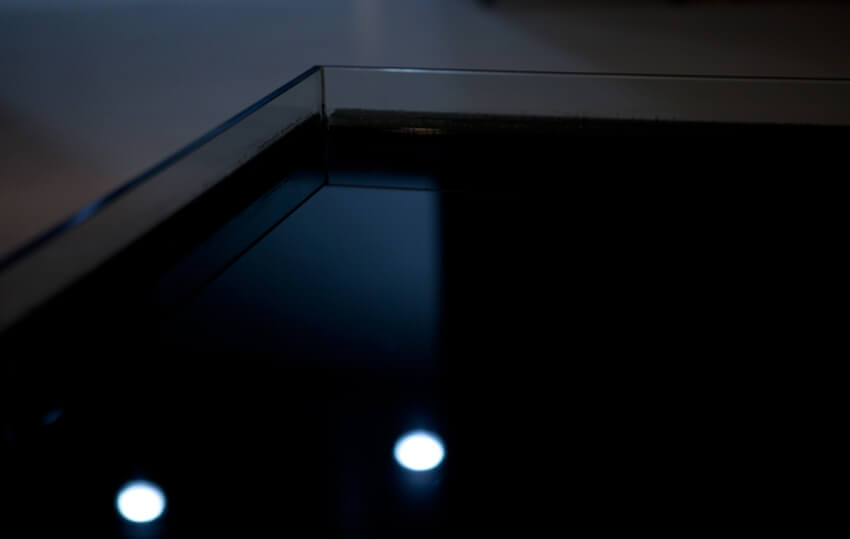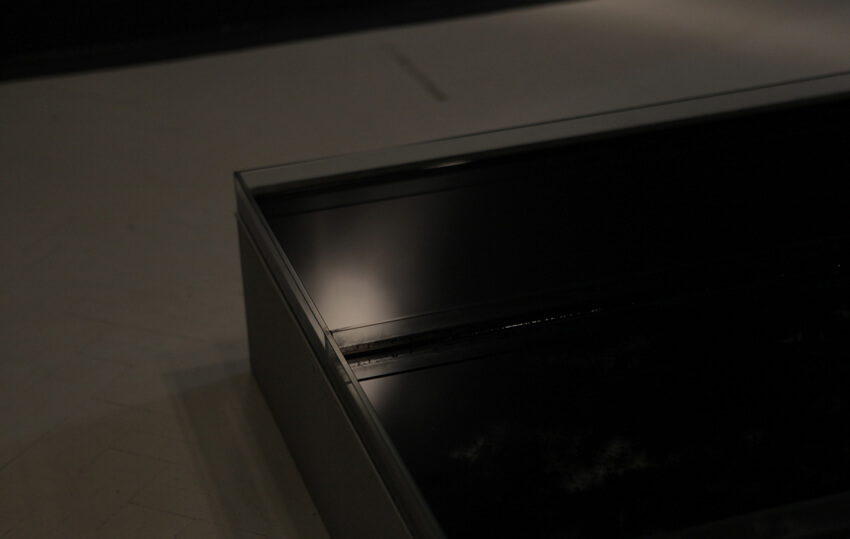Interview by Lula Criado
(Spherulite project)
(LIQUID-DO project)
Moscow-based artist Julia Borovaya is fascinated with substances and their chemical and physical qualities. Her pieces of art fuse technology with molecules and add a new layer to what we know about hybrid art. With Edward Rakhmanov, Borovaya cofounded SAVE lab, a platform for collaboration between scientists and artists based in the basement of Moscow State University.
In one of her earliest art projects, Liquid, Borovaya studied different liquids’ behaviour, dynamics and physical characteristics (form, density, texture or quality), from milk, oil and acrylic paint to various kinds of juices. The project is a compilation of 20 photo shoots and six phases based on the participants’ states of meditation: The first meeting with liquids, LIQUID~place, LIQUID~metamorphoses, Attack of Red, INDIGO people and Bionic. Borovaya recorded, with a very fast shutter speed, the exact moment at which the liquids crashed with the human body. The project was completed in 2010.
More recently, under SAVE lab, Borovaya and collaborators have developed projects in which they explore three states of matter: solid, liquid and gas. These explorations brought me back to thermodynamic lessons in my college days, where we did some exciting experiments to deeply understand endothermic and exothermic reactions and how to matter changes under different temperatures and pressures.
In LIQUID⁓DO, a given algorithm translates the energy liberated during the solvation process into sound. The artists take molecules of palmitic acid and add portions of a detergent creating an artistic abstraction from the chemical reaction. This artistic abstraction is captured by a computer program that transforms chemical synthesis into sounds.
In SPHERULITE, the crystallisation process of sodium acetate is their object of interest while in Space of Objectlessness, a homage to Malevich’s Black Square, the conceptual framework is the evaporation of 12 chemical substances. In the piece, the chemical substances, housed in a black glass container, are evaporated in a chaotic movement filling all the space of exposure.
If in The World as Non-Objectivity (Munich, 1926), Malevich outlined his Suprematists theories of a world of non-representation focused on ‘‘the feeling of work’, in Borovaya’s universe, the viewers can ‘feel the work’ too. But rather than the depiction of the artwork itself, they can feel the fusion between technology and art through algorithms and chemical reactions.

(Space of Objectlessness project)

(Space of Objectlessness project)
You are an experimental artist working with fluids (milk, oil, acrylic paint or liquid plastic); When and how did the fascination with them come about?
I am interested in working with substances to reveal their qualities and characteristics and to observe their nature. The projects I have created are based on chemistry and physics; they balance fine art and architecture. Originally, I was a professional painter, and paints are haptic to me. Chemistry and physics represent to me applied painting, where processes and reactions are paints and brushes. Studying at the University of Architecture helped me create art objects from these materials and use innovative technologies.
With your work, you explore the ‘study of the behaviour, dynamics, texture, quality, form, physics of liquids of different compositions’; what are the biggest challenges of working with liquids?
Working with natural processes has taught me and my colleagues humility and respect for nature. Nature needs to be observed and acknowledged. Nature does not like any interference from the human ego. You need to understand that any natural process has its own algorithm— its own rules of the game. The artist’s task is to find a creative solution that wouldn’t break these rules but, instead, would reveal them.
During the testing phase, we have a lot of explosions, precipitation, and unaccountable situations, because nature gets angry when it is not respected or acknowledged as a partner. We always work with new substances, and it is like a war with aliens where you don’t know what kind of weapons they have or what they have in mind. Very often, such alchemic battles are quite dangerous.
You have also explored three states of matter: solid (SPHERULITE), liquid (LIQUID~DO) and gaseous (Space of Objectlessness); Could you tell us the intellectual process behind your relationship with matter and its different forms?
We are interested in the various forms and states of substances and we do not intend to use all of them. When working with a natural process, it is very important that it flows in real-time. We want it to be a process where the audience can connect and synchronize through its attention.
LIQUID~DO explores the self-organization of the solvation process. Using the capabilities of digital sight and a special algorithm based on molecular self-organization, we have created musical (sound) self-organization. This project explores the capabilities of hybrid art. SPHERULITE explores the crystal process through analysis. Based on a special real-time algorithm, the crystallization process transforms into a digital graphics story.
In these projects, we are interested in the physical and the digital self-organization and the way these two spheres interact within a single natural process. Space of Objectlessness is a totally different story. The project was created for the 100th anniversary of Kasimir Malevich.
In this project, we continue his idea of objectlessness in art through chaotic movements of molecules in the air. Solaris is a poetic story about the liquid ocean, about what a man can see through the liquid surface and how he perceives his own thoughts, feelings and emotions. This project is hybrid art; we have connected substances and technology. It works through invisible Bluetooth.
What directions do you see taking your work into?
Together with performers, we have been researching the direct contact between the human body and a chemical/physical process or substance within the save.co.lab project. We are interested in the subtle quantum links in the relations between man and substance in real-time. The Crystal project explores how are man and substance revealed when they encounter each other. Also, I want to go back to painting but with a new perception and approach to this ancient genre.
What is your chief enemy of creativity?
We have two enemies. The first one is the fact that there are not enough (mainly financial) opportunities in Russia for us to grow further in what we do: no grants or special programmes for artists. The second enemy is that people are not ready to accept our art. For this reason, we need the support of intermediaries – managers and art theorists.
You couldn’t live without…
I cannot live without experiments – primarily those with myself. And it’s perfectly ok with me that today it’s about alchemic battles and tomorrow about swimming across Gibraltar.








